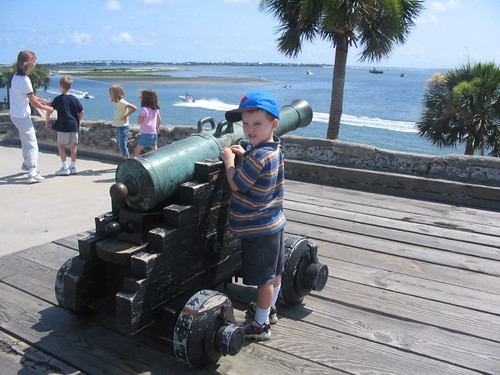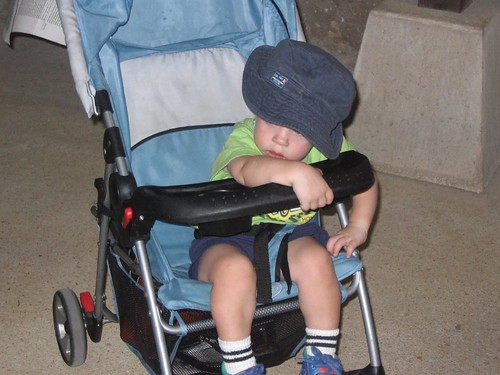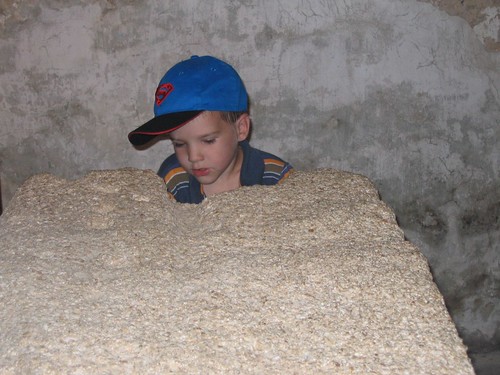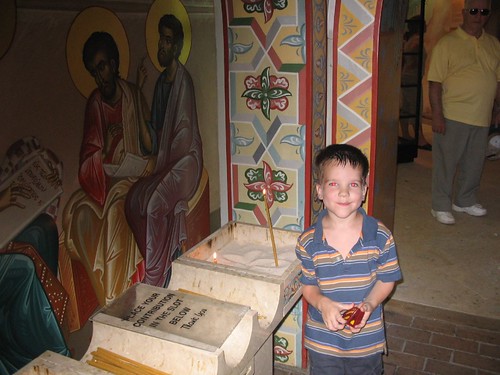The only non-beach thing we did was a morning in St. Augustine – when you have a little boy addicted to "swording" you must take him to a fort, if one’s available.

Castillo de San Marcos, of course, and a place that I’ve visited several times before, but not in a long time, so there was plenty to note anew, even as I was melting and worried about the baby melting even more.

It’s really a well-done Park, an especially doable one because the history is relatively simple, especially when compared to huge battlefields and such. I mean, you’ve got your Spanish, then your English, then your Spanish again, then your U.S. Throw in the coolness of coquina, and you’ve got yourself a nice hour or so, even if you are, as stated before, melting:

An element that I’d never really absorbed before – and perhaps it wasn’t noted in my previous visits, lo those many years ago – was Fort Mose:
Established in 1738 by Colonial Spanish Florida’s Governor Manuel Montiano, Fort Mose gave sanctuary to Africans challenging enslavement in the English Colony of Carolina. Approximately 100 Africans lived at Fort Mose, forming more than 20 households. Together they created a frontier community which drew on a range of African backgrounds blended with Spanish, Native American and English cultural traditions.
Fort Mose, a maroon community, was legally sanctioned by the Spanish Government making it the first free African settlement to legally exist in the United States.
There’s more at the link. Fort Mose was two miles north of St. Augustine, and all that exists of it today are artifacts. There’s no lack of information about it on the net, although it existed for only a short time, it has tremendous importance, including symbolic. The inhabitants were all Catholic:
A St. Christopher medal found at the site
There was a priest assigned to the community and the full name was “Gracia Real de Santa Teresa de Mose” – I couldn’t figure out what that means, so if someone knows, please tell us. I don’t know if the St. Teresa is St. Teresa of Avila, or if there’s a St. Teresa of Moses somewhere back there in history.
Oh, on another day, we made the requisite pilgrimage to the Shrine area, to do the requisite “Do They Have Our Books” check at the Shrine bookstore, and then particularly to Our Lady of La Leche, a picture of which is tacked above my computer.
As we were walking to the car, one of those drop-in/drop-off tour buses pulled up, and we could hear the driver giving the intro to the place as a few of his passengers alit – he allowed as how this was where the
Spanish first stepped on land in the area, and then went on to say that St. Augustine residents viewed it as a real nice place to come have picnics and take walks. And we’re off to the next site…
One more thing – on the Fort morning we did a short stroll down St. George Street – just a block or two – where we could do the other required pilgrimage to the St. Photios Greek Orthodox Shrine – a wonderful, cool oasis, in which you walk from a garden into a small series of rooms bursting with huge icons and glimmering with candlelight:

Michael used to buy incense there regularly, but he said they didn’t have the right kind of something this time – I don’t remember what he said. I was probably wiping up the puddle that was the baby at that point.
